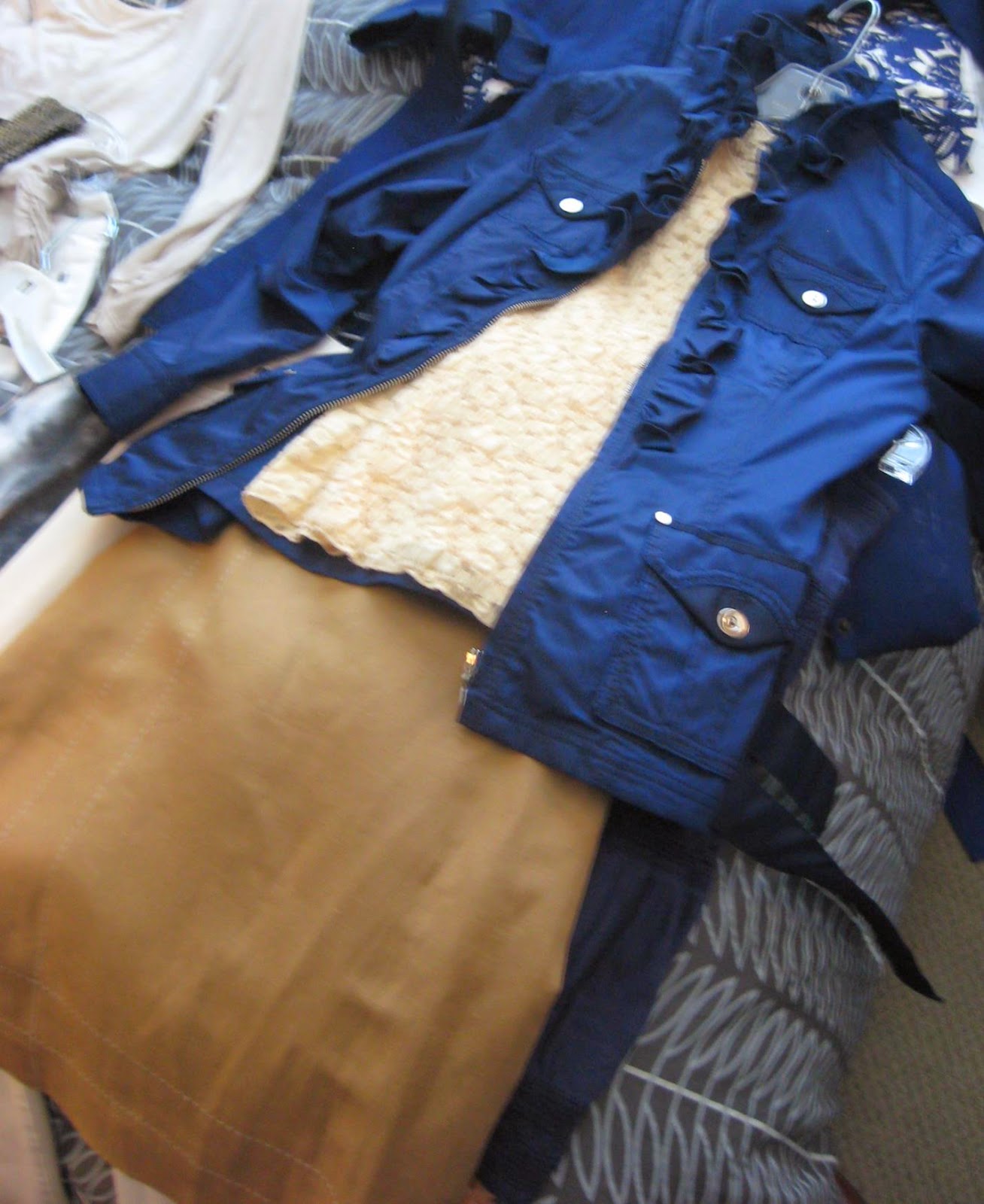1. Add texture.
In this example, we've taken a navy blue jacket that has a little ruffle on the collar/lapel, put it over a cream-colored lace shell, and paired it with a khaki pencil skirt. The texture from the jacket's ruffle and the top's lace adds depth and dimension to the look.
2. Create contrast.
Here we've created a very contrasting look with white over black and black over white. We put a white jacket over a black dress, and then added a black belt over top of the white jacket. If this neutral look still feels too colorless for your own taste, you can always incorporate a pop of color with a red shoe as we did here. Or, you can add some color closer to your face by wearing a red necklace that works with the neckline of the dress.
3. Mix patterns.
If you're a regular reader of this blog, you know how much I love to mix prints and patterns. You can easily mix a patterned top in a neutral color with a patterned bottom also in a neutral color. If you are not sure about mixing patterns, start with one subtle pattern (one that appears as a solid from a distance) and one slightly bolder print.
4. Incorporate pseudo neutrals.
Pseudo neutrals are those colors that are often found in nature (such as your various shades of greens and blues) and/or ones that work with a variety of other colors (i.e burgundy). With this client, I have taken a white skirt with brown embroidery (both neutral colors), and added a burgundy shell and a green short-sleeve cardigan (both pseudo neutrals). The detailing on the cardigan works nicely with the embroidery on the skirt. Oftentimes people are surprised when I say that green is a pseudo neutral, but think of it this way: every flower of every color has a green stem and green leaves, doesn't it? The green does not clash with the beautiful color of the blossom!
Want more ideas on how to mix color and patterns in your own wardrobe? Contact us today to schedule a closet edit.
Click here to subscribe to our monthly newsletter.





No comments:
Post a Comment